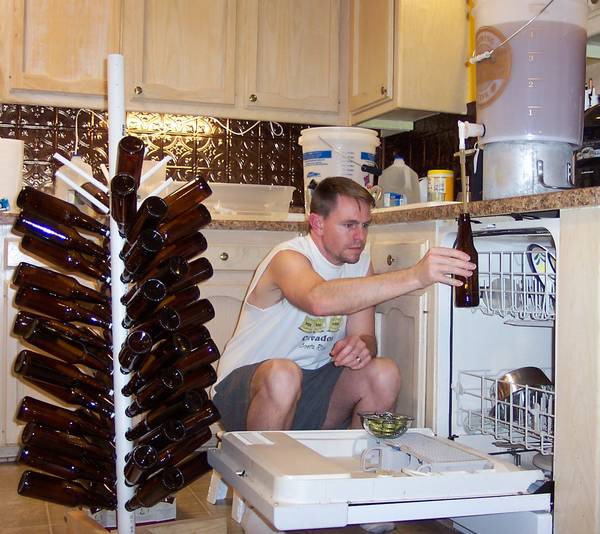Someone bumped a thread from 2005, and this was one of the posts, some great info on priming sugars.
Many people have been told that priming bottled conditioned beer should not be done with sucrose. Many books state that malt extract is best for priming. Be aware that malt extract will generate break material when boiled, and that the fermentation of malt extract for priming purposes will often generate a krausen/protein ring around the waterline in the bottle, just like it does in your fermenter. Simple sugars don't have this cosmetic problem and the small amount used for priming will not affect the flavor of the beer (Based upon my 15+ years of brewing).
Here are some simple basic rules for Priming :
Using Corn Sugar (Sucrose) - 2/3 cup for bottling and 1/3 cup for Kegging.
Using Cane Sugar (Sucrose)- 2/3 cup for bottling and 1/3 cup for Kegging.
Using Brown Sugar (Sucrose)- 2/3 cup for bott! ling and 1/3 cup for Kegging.
Using Maple Syrup - 1¼ cup for bottling and 5/8 cup for Kegging.
Using Molasses - 1 cup for bottling and ½ cup for Kegging.
Using Honey - 1 cup for bottling and ½ cup for Kegging.
You can prime your beer with any fermentable that you want. Any sugar: Corn Sugar, Cane Sugar, Brown Sugar, Honey, Molasses (if you can get them out of the ground), even Maple Syrup can be used for priming.
The darker sugars can contribute a subtle aftertaste (sometimes desired) and are more appropriate for heavier, darker beers.
Simple sugars, like Corn or Cane Sugar, are used most often though many brewers use dry malt extract too. Ounce for ounce, Cane Sugar generates a bit more carbon dioxide than Corn Sugar, and both pure sugars carbonate more than malt extract, so you will need to take that into account.
Honey is difficult to prime with because there is no standard for concentration.! The gravity of honey is different jar to jar. To use hone y, you will need to dilute it and measure its gravity with a hydrometer. For all sugars in general, you want to add 2-3 gravity points per gallon of beer to prime.
Remember, the above are measurements for a 5 Gallon batch. It is always best to heat up anything that you are using for priming with water. If you are doing less than 5 Gallons at a time, then here are some things to take into account.
5 Gallons will give you...
54 x 12 oz Bottles
40 x 16 oz Bottles
32 x 22 oz Bottles
So divide the number of bottles into whatever you wish to use for priming and that will give you the amount your looking for.
Bottom line: use the sugar that you feel most comfortable with. Each of us has their own favorites. -->








